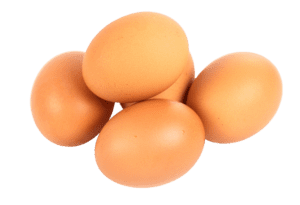How more protein can help with healthier ageing
As we live longer, people have begun asking how we can live better as we age. Staying active, healthy and social are all crucial interlinking elements of this, and excellent nutrition plays an essential supporting role.
On average, older people with a higher-protein diet maintain a healthier weight and muscle mass and reduce the risk of falls and serious illnesses[1],[2]. It can be inferred that this can contribute to happier, healthier and more active later years [1],[2].
Why protein is especially important for older adults
For the average person, muscle mass decreases around 3–8% each decade after the age of 30, and this rate is even higher after 60[3]. Consuming an adequate amount of high-quality protein at each meal may prevent or delay the onset of Sarcopenia[4]. It may also help with wound healing and fighting infection. With higher muscle mass and better overall health, older people can minimise falls, be social for longer[1],[2].
On the flip side, not consuming enough protein may be a factor in the development of Sarcopenia,[5]. This is linked to conditions that can seriously impact the daily lives of older people, such as physical disability, cardiovascular and respiratory disease, obesity[6]
Recommended protein intakes
As we age, the body’s ability to build and maintain muscle from dietary protein decreases[7], so the current requirement of protein for older adults is much higher than for younger adults. Below compares protein needs across varied groups.
| Dietary protein per kg bodyweight | Protein amounts (g) for a75kg person | |
| Younger adults[8] | ~0.8g | 45-75g |
| Older adults[7] | 1.2 – 2.0g* | 90-150g |
| Elite athletes[9]. | 0.95–1.8g | 73.1-135g |
*Up to 2.0g per kg body weight may be needed in cases of severe illness, injury or malnutrition[10].
Because of natural aging processes , medication, physical and cognitive impairment and other challenges, older adults often eat smaller meals on average. Many have little or no appetite – a condition called the anorexia of ageing[11]. Unless these smaller meals have very high protein, it is much more difficult for older adults to meet their RDI for protein.
Making the most of every meal
Evidence suggests including 25-30 grams of high-quality protein per meal, including breakfast[12]. This is because the body can only use a limited amount of protein at a time. If, for example, you rely on one meal for a daily protein intake of 60 grams, your body may only be able to use 30 grams, and the other half is wasted. On the other hand, if each meal and snack is protein-rich, your body can better use all the protein in the food or drink.
What does 25-30 grams of protein look like in real terms? Here’s how some common protein-rich foods add up[13]:
| Food type | 25-30 grams of protein |
1 Grilled beef fillet – 38.2g protein |  |
| 5 Eggs (average 6g protein per egg) |  |
Making protein part of your healthy ageing toolkit
Consuming enough protein can be an important part of staying fitter, healthier and more active as we age. But factors such as health conditions and reduced appetite make it difficult for older people to get enough protein from standard foods and drinks. However, ensuring each meal is high in protein can help maximise the amount of protein the body can use.
It’s clear from the research that protein can be important in supporting healthy ageing. This is why The Pure Food’s range of meals, snacks and smoothies are fortified with additional protein. Adding these to the menu is a simple way to support healthier ageing by boosting protein at each eating or drinking occasion throughout the day.
Explore The Pure Food Co’s range of richly flavoured meals, soups, snacks, desserts and smoothies to add delicious nutrition with every mouthful.
_______
[1] Yeung, S. S. Y., Reijnierse, E. M., Pham, V. K., Trappenburg, M. C., Lim, W. K., Meskers, C. G. M., & Maier, A. B. (2019). Sarcopenia and its association with falls and fractures in older adults: A systematic review and meta-analysis. Journal of cachexia, sarcopenia and muscle, 10(3), 485–500.
https://pubmed.ncbi.nlm.nih.gov/30993881/
[2] Chernoff R. (2004). Protein and older adults. Journal of the American College of Nutrition, 23(6 Suppl), 627S–630S.
https://pubmed.ncbi.nlm.nih.gov/15640517/
[3] Volpi E, Nazemi R, Fujita S. Muscle tissue changes with aging. Curr Opin Clin Nutr Metab Care. 2004;7(4):405-410.
[4] Paddon-Jones, D., Campbell, W. W., et al (2015). Protein and healthy aging. The American Journal of Clinical Nutrition, 101(6), 1339S–1345S. DOI: 10.3945/ajcn.114.084061(Protein and healthy aging – ScienceDirect)
[5] Note: Sarcopenia definitions vary. Many advocate for including dynapenia – loss of strength – in the definition of Sarcopenia, while others favour treating and highlighting them as distinct issues. (Reference: https://www.ncbi.nlm.nih.gov/pmc/articles/PMC6125026/#bibr143-1559827615594343)
[6] Shefflette, A., Patel, N., & Caruso, J. (2023). Mitigating Sarcopenia with Diet and Exercise. International Journal of Environmental Research and Public Health, 20(17). https://doi.org/10.3390/ijerph20176652
[7]Baum, J., Kim, I,. and Wolfe, R. Protein Consumption and the Elderly: What Is the Optimal Level of Intake? National Library of Medicine, 2016 doi: 10.3390/nu8060359
[8] https://www.eatforhealth.gov.au/nutrient-reference-values/nutrients/protein, accessed 29 September, 2023
[9] Deutz NE, Bauer JM, Barazzoni R, et al. Protein intake and exercise for optimal muscle function with aging: recommendations from the ESPEN Expert Group. Clinical nutrition. 2014 Dec 1;33(6):929-36. Redirecting (elsevier.com)
[10] Volkert D, Beck AM, Cederholm T, Cruz-Jentoft A, Goisser S, Hooper L, Kiesswetter E, Maggio M, Raynaud-Simon A, Sieber CC, Sobotka L, van Asselt D, Wirth R, Bischoff SC. ESPEN guideline on clinical nutrition and hydration in geriatrics. Clin Nutr. 2019 Feb;38(1):10-47. doi: 10.1016/j.clnu.2018.05.024. Epub 2018 Jun 18. PMID: 30005900.
[11] Natalie J Cox, Leanne Morrison, Kinda Ibrahim, Sian M Robinson, Avan A Sayer, Helen C Roberts, New horizons in appetite and the anorexia of ageing, Age and Ageing, Volume 49, Issue 4, July 2020, Pages 526–534, https://doi.org/10.1093/ageing/afaa014
[12] Paddon-Jones D, Rasmussen BB. Dietary protein recommendations and the prevention of Sarcopenia. Curr Opin Clin Nutr Metab Care. 2009 Jan;12(1):86-90. https://pubmed.ncbi.nlm.nih.gov/19057193/
[13] https://nutritionfoundation.org.nz/nutrition-facts/Nutrients/protein/